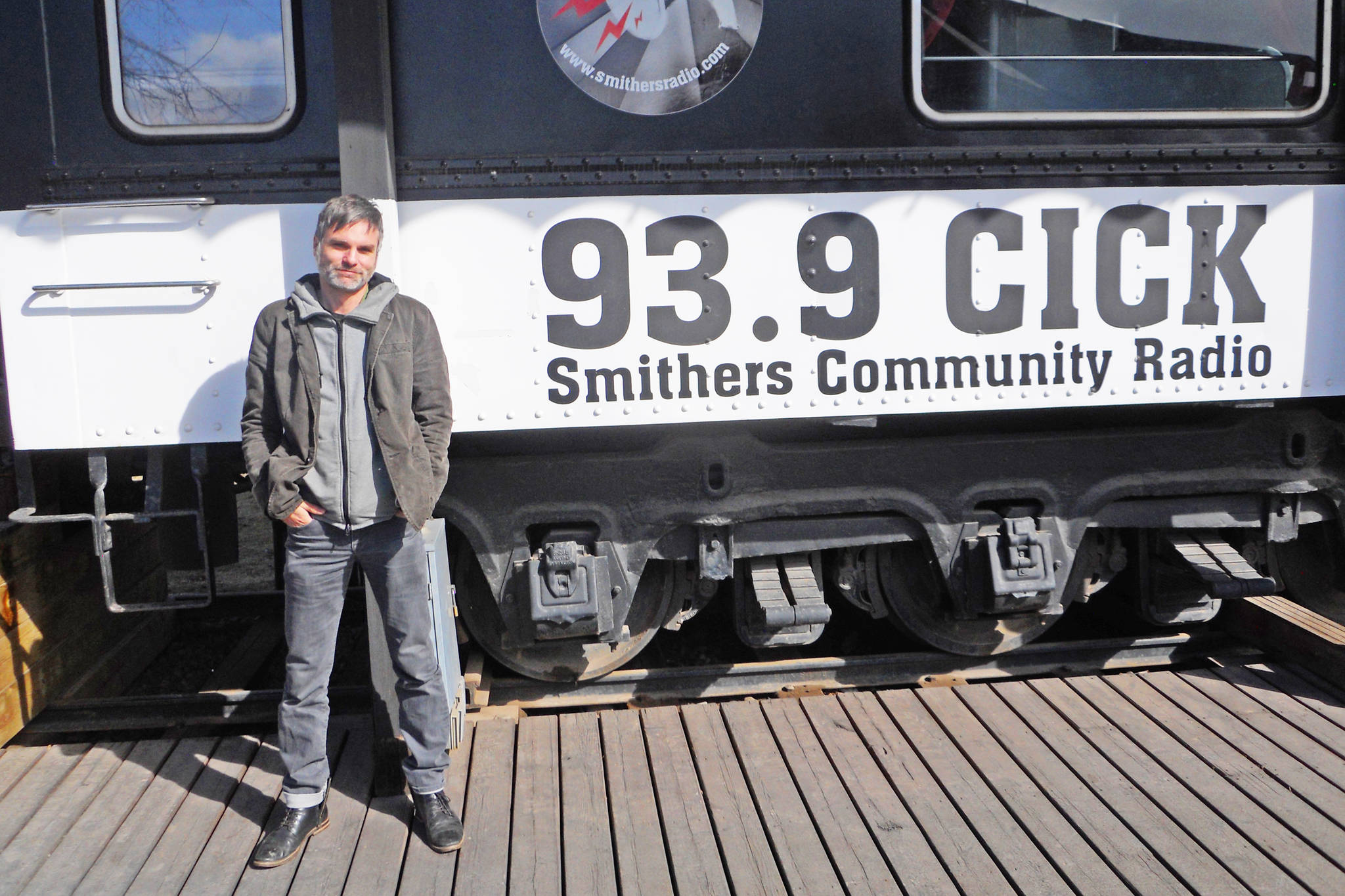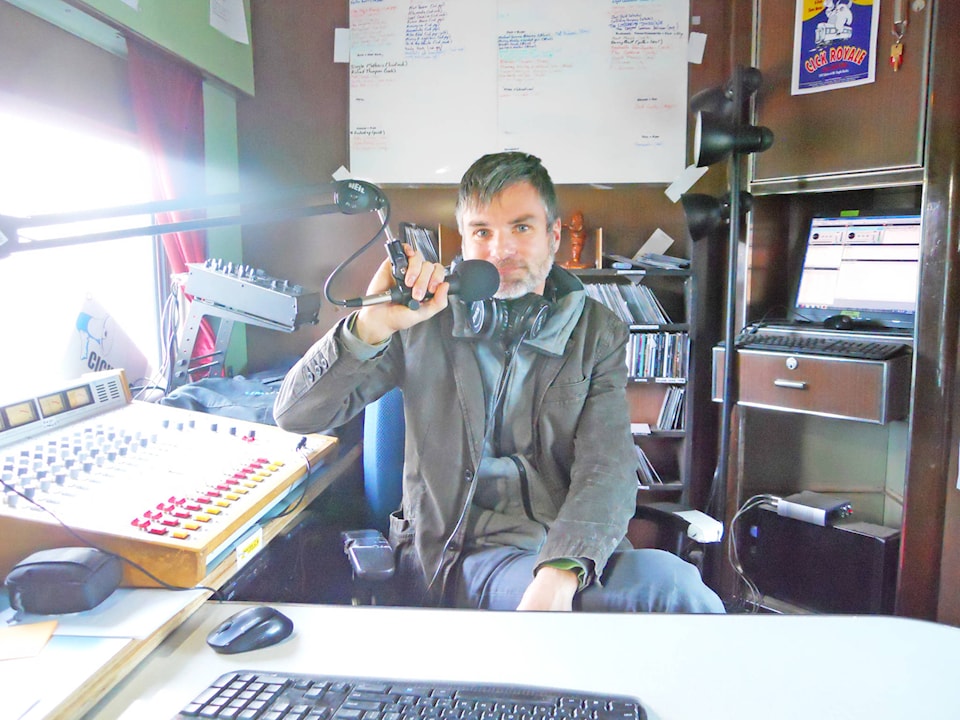In 1975, the Lions Club brought a railcar to Smithers Central Park to commemorate their first 10 years active in Smithers. Now, in the spring of 2019, another 10 years is being celebrated, that of CICK 93.9FM, the not-for-profit community radio station that broadcasts from that railcar.
The local landmark was originally a dining cart named “Quesnel.” The old dining car was provided by CN Rail to the Lions Club in 1975 who transported it from the railway to its current location via a lengthy process of towing it across rail laid by logging-loaders. A process that took two weekends to complete.
“The Lions Club wanted to turn it into sort of a museum piece and have mannequins frozen in time doing the different things you would expect to be happening in here,” said Glen Ingram, station manager at CICK. “When they heard that we were really interested in utilizing it for a community radio space they were just as excited as us because they finally saw a role for this place that would play a significant part in our community.”
CICK Radio is the brainchild of Ingram, Abdel Naroth and Erik Lilles, who started the station in 2009. Ingram says the idea for a community radio station is something he has had with him since he lived in Minneapolis, Minnesota, where he volunteered for KFAI Radio, the local community station there.
“This was during [the] Bush years, where the politics were becoming rather polarized,” said Ingram. “But the station appeared to be the cure for the polarization. It appeared to attract people from all places in the community, different values, and different ethnicities, all gathered under one roof to share their ideas on the radio waves.
“That’s where the concept was born, by volunteering at that station and then coming here, I felt that a community of this size could support a station and it could also be a tool used to connect the community and to allow differing opinions to be shared. A safe place to debate, with the intention of staving off this polarization we see in communities so often.”
Over the years, CICK radio has become an integral part of the local arts community, highlighting the talents of local and Indigenous artists.
“I see it as a place where all these little gems of music are just lying under the surface and not being heard or shared are now being constantly and commonly heard through our airwaves,” said Ingram. “What we want to do is encourage this performing spirit that is sort of hidden within this community and encourage and embolden those artists to try something new.
“We’ve become a sort of a destination for artists that are maybe just passing through town and only have 30 minutes. We even got a live broadcast and videostream of some touring artists that just happen to have stopped for a coffee in Smithers. We call them ‘Lounge Car Sessions’ and they have even grown into something where we actually hear people talking about it in Vancouver. I’ve had volunteers walking on Granville street and they’ve heard someone talking about a train-car in Smithers as a place to go to perform as you are going from venue to venue across the province. We have become a destination for artists that land here and play.
“It amazes me. That’s what I love about this job so much is that all I’m doing is riding this thing of the community’s own invention and I don’t know where it’s going to take us. Every time someone steps through the door they just add another layer of complexity to this beautiful organization. As much as I love the content that comes out of here, I think that it’s almost more about the people that come through the door and the experiences they have and what it brings to them as it is with what they share with the rest of their community.”
As a not-for-profit, community radio station, CICK receives support from public grants, fundraising, local sponsorships, and a membership program.
“We wanted to make sure that we sounded different from commercial radio, that people could easily hear the difference between us and commercial radio and that we would find our funding through support from our members and sponsors,” Ingram said.
CICK supporters pay $20 a year to become members of the station. In exchange they get CICK merchandise, discounts to CICK-partnered events (i.e., local music concerts), and their names entered into lotteries to receive prizes.
“They also get that warm fuzzy feeling of being part of something that’s really vibrant in our community,” said Ingram.
Plans are currently being made for an upcoming fundraising celebration called “Circus Royale” to be held in Central Park, just outside the station. The date of the fundraiser is yet to be announced, but Ingram promises games, live music, and a beer garden. The funds raised would go to help renovate the building to make the rail-cart more accessible to those with mobility issues as well as to make the building itself more energy-efficient.
“We’re looking at getting solar panels on the roof because, as you would imagine, a 1929 train-car isn’t the easiest thing to heat in winter,” said Ingram. “We would like to offset some of those costs and reduce our impact by collecting some solar energy from the sun. And as our roofline is southern-facing, our days are super-long in the summer so it makes sense to have solar offset.”

